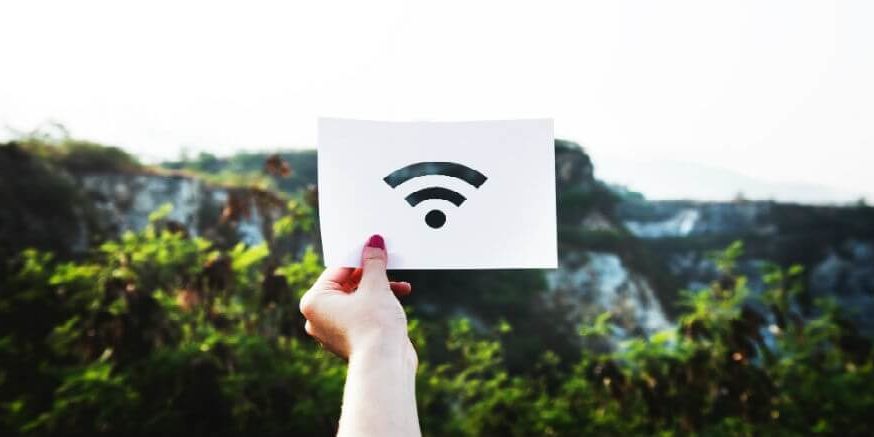As the Internet of Things becomes an established fixture in the market, it’s now fairly commonplace to hear IoT and WiFi mentioned in the same breath. But many company leaders make the false assumption that IoT and WiFi connections are the same. A common train of thought is, “Let’s add a WiFi module to our product and make it an IoT device!” That’s because, at a quick glance, an IoT ecosystem and a far simpler WiFi network can look quite similar. But when it comes to functionality and management, the differences are significant. If you fail to appreciate those differences, you could end up with a very disappointing user experience.
The reality is that a few WiFi-connected devices do not comprise an IoT infrastructure. A WiFi connection is merely a piece or subset of an IoT system. A true Internet of Things is far more than a handful of devices, vehicles or equipment connected over WiFi. Rather, the IoT is an interconnected ecosystem that requires the right configuration, security and management tools—all tied together with a cloud structure and custom IoT mobile app.
How is the Internet of Things Different Than a WiFi Network?
While the IoT and a network of interconnected devices share many similarities, it’s the differences that are most important. Firstly, you must understand WiFi, which is commonly the subject of questions such as, “Is WiFi the same as internet?” WiFi is simply a wireless network connection, which can include the internet, a private network, and IoT devices.
Using WiFi to connect and control multiple devices can serve as a quick, convenient way to achieve an objective, but this sort of configuration can be problematic for a few reasons:
- Without a well designed IoT cloud and associated HTTP: or MQTT: portal, your WiFi enabled device will be limited to a Direct WiFi connection between your device and another device or mobile phone. As such, they have to be in WiFi range of each other at all times (75-100’) to communicate. This alone is a show stopper for many applications, as users today expect to be able to control a device from anywhere in the world.
- Each device type will have its own user interface, which makes it challenging if you’re seeking to manage multiple pieces of technology at once (i.e. a fleet of autonomous warehouse vehicles and your company’s handheld scanners).
- Independent device management protocols may not be able to communicate in the way that is possible with a well designed IoT system. A basic WiFi direct connection may allow for one avenue of communication between the user and the device, but the user may need access to other devices or the internet simultaneously, which may not be possible. As an example, you may need the data stream from a user’s phone to generate prompts for multiple autonomous warehouse vehicles so they can transport items to the proper location precisely when they’re needed. These more complex functions simply aren’t possible with just a direct WiFi connection.
- Open WiFi connections often lack security, creating vulnerability to hackers and unauthorized network access. Put simply, you don’t want to find yourself in a situation where a teen hacker refines his tech skills by programming your automated warehouse vehicles to drive in circles—a fairly light situation when compared to the potential damage from a truly malicious security breach.
You can think of a standard WiFi connection as just a component of what you would have in a complete IoT ecosystem. An IoT infrastructure is an independent network that can be managed in a cloud with a mobile app, complete with an intuitive and refined user interface, quite often with voice command capabilities, that places a major focus on user experience (UX).
What Are the Benefits of a Custom IoT Mobile App?
Many companies can benefit from a custom mobile app to oversee your company’s IoT devices, from hospital and healthcare companies to manufacturing facilities, the energy sector and beyond. With more and more devices, vehicles and equipment having WiFi capabilities, the need for this type of app is growing.
Most business and industrial IoT apps are custom-built to suit the company’s specific needs. After all, each enterprise or organization has a unique network, with different requirements in terms of management and the degree of connectivity between the various devices/vehicles/equipment.
Here’s a look at some of the advantages a custom IoT mobile app offers:
- You’ll have a single, central management panel that lets you control all the devices in your IoT network. This clean, robust interface will be designed with your precise needs and preferences in mind.
- You can manage the manner in which networked devices connect and interact with each other. This includes the ability for one device to trigger a response in another networked device, without human intervention.
- You can implement a range of security measures, such as secure cloud and encrypted HTTP/HTTPS or MTQQ connections, to protect data as it’s transmitted across the network.
- You can implement a variety of user permissions configurations for elevated security.
Custom IoT mobile apps are ideal for enterprise usage, B2B uses and B2C companies, such as manufacturers who are seeking to sell IoT-friendly devices or vehicles with easy-to-use management interfaces and connections to digital assistants such as Alexia, Siri or Google Assistant. The user experience is only limited by your imagination!
At 7T, we focus on innovation, and that includes the Internet of Things. After all, what good are all those “smart” devices if you can’t manage them in an efficient and practical way? Our development team has experience building mobile apps for clients in a range of industries. We can leverage our app development skills in conjunction with expertise in a number of other areas, such as Augmented Reality, Predictive Analytics and Artificial Intelligence.
If you’re ready to build an incredible IoT app, turn to the experts at 7T. Based in Dallas, we also have locations in Austin and Houston. But our developers work with clients across the United States as well. Contact us today to discuss your app development project.









